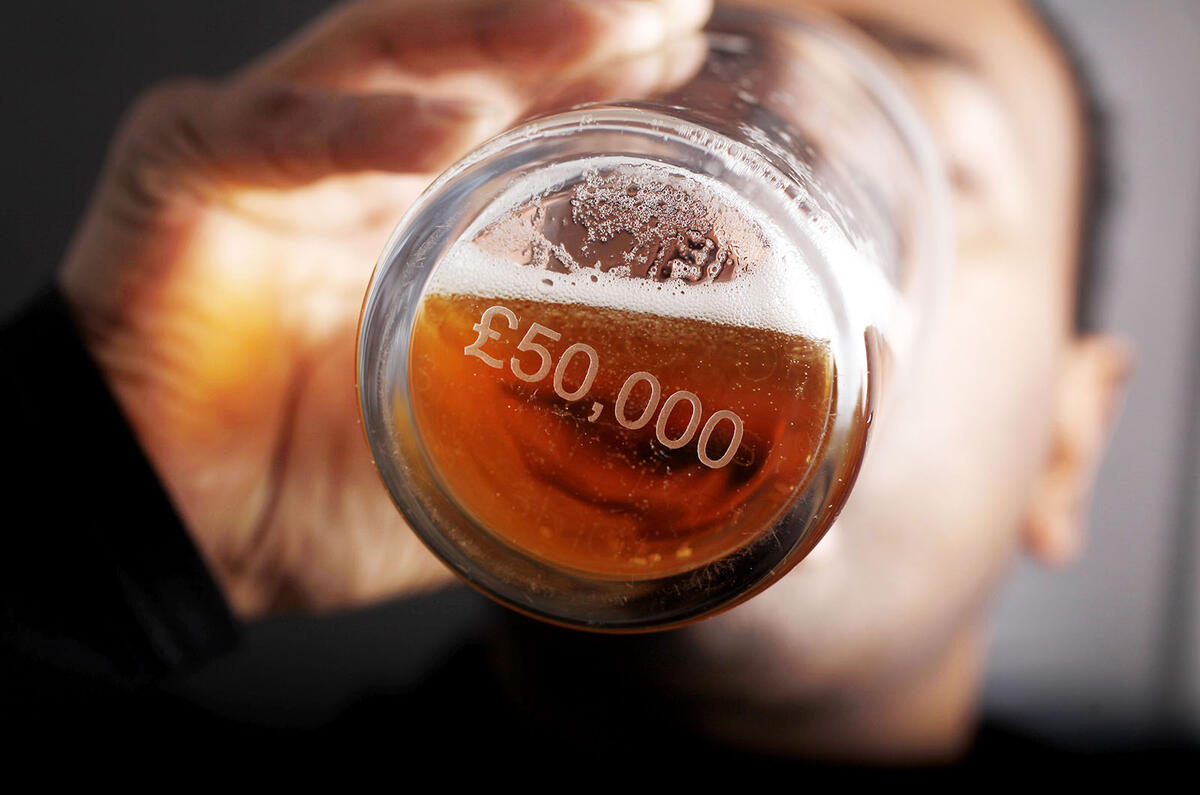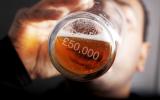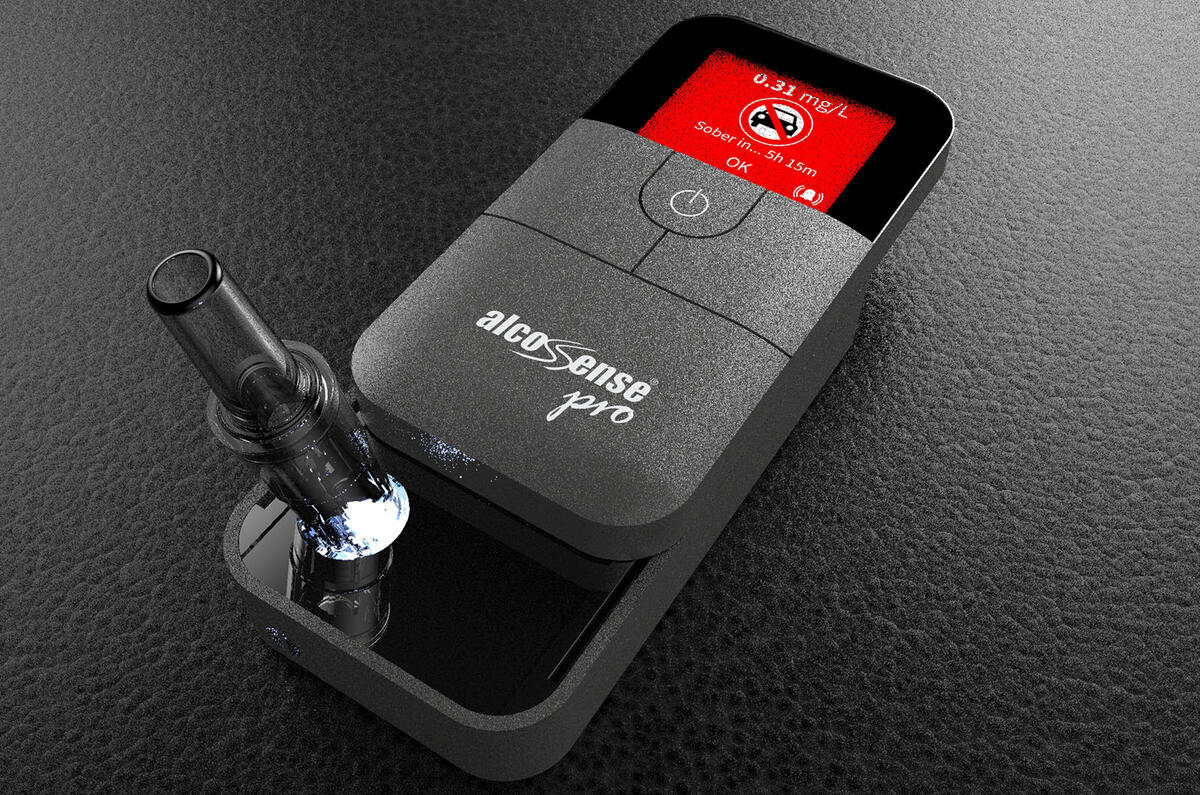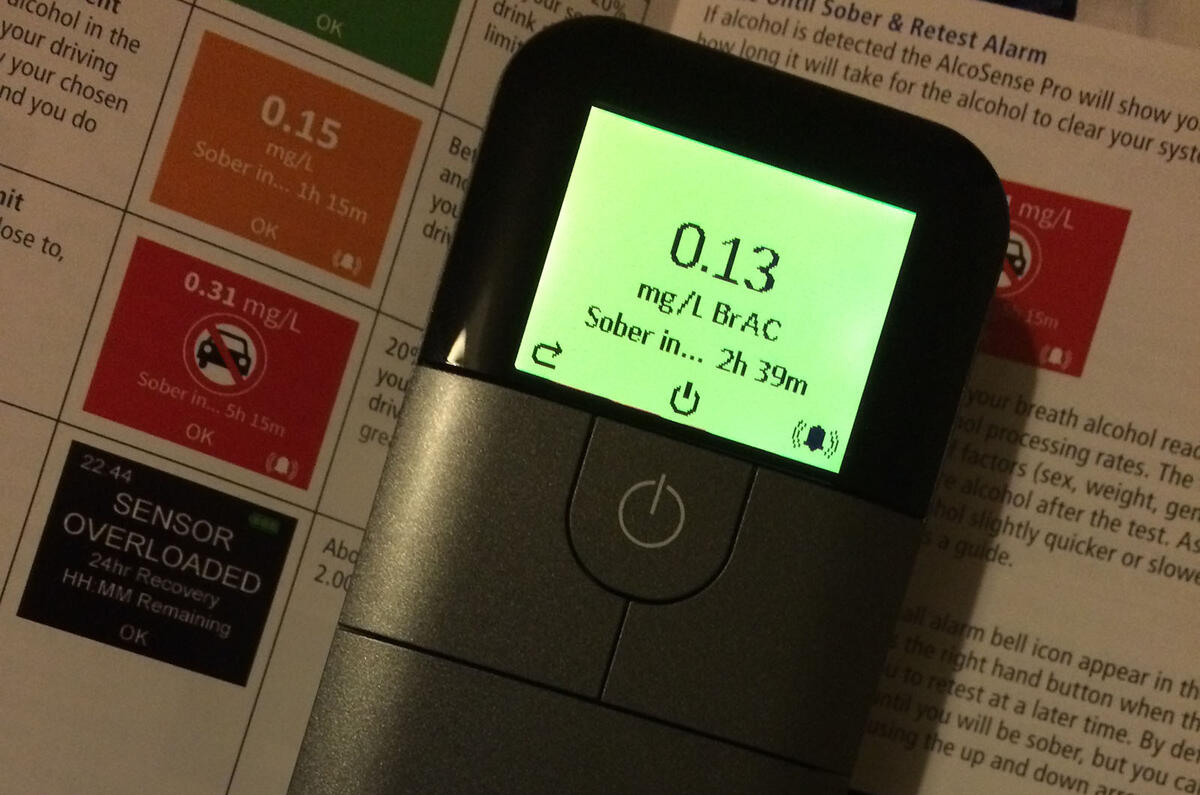Drink-driving awareness comes to the fore around Christmas and New Year, but while the overall number of deaths from drink-driving is decreasing, the proportion of motorists getting caught for being over the limit the morning after a festive party is on the rise.
Department for Transport (DfT) statistics show that ‘morning after’ offences accounted for 13.82% of all drink-driving offences 10 years ago, but that figure has now exceeded 20%.
The figures suggest that some of the basic warnings concerning drink-driving aren’t always being heeded. “People think that going to bed is the same as pressing a reset button,” explains Hunter Abbott, managing director of Alcosense, a manufacturer of breathalysers.
Research from the Think! anti-drink-driving campaign supports this. It reports that around 5500 people are failing breath tests between 6am and midday every year.
The new figures show that 58% of people who have four or more drinks on a night out sometimes drive the following morning, but that only one third of people are aware they could still be over the limit.
One of the challenges facing motorists is the fact that alcohol affects different people in different ways.
“A number of factors can dictate the effect of alcohol and the speed at which your body can absorb it, including your weight, gender, the type of alcoholic drink you’ve consumed and whether you’ve eaten beforehand,” says Abbott. “If you drink on an empty stomach, your body treats alcohol just like water and draws it straight into the bloodstream.”
As a general rule, one unit of alcohol can be broken down by a healthy person’s liver each hour, but this is highly dependent on physical make-up and metabolism. Additionally, the level of alcohol in the bloodstream can continue to increase for up to 90 minutes after the last drink, a factor that can leave some drivers assuming they feel capable of driving when they are in fact over the limit.
England’s drink-drive limit is 35 microgrammes of alcohol per 100 millilitres of breath. In December 2014, Scotland’s limit was lowered to 22 microgrammes.
Data from local and regional police forces suggests that the number of prosecutions from drink-driving offences committed in Scotland has fallen by 12.5% in the year since the new limit was introduced. In the rest of the UK, which adheres to the higher limit, prosecutions have fallen by 6.6%
The lower limit, it seems, is discouraging more Scots from drinking any alcohol before driving.
The higher limit adopted by the rest of the UK leaves more of a grey area, where many drivers assume they can have a couple of drinks and still remain within the legal limit. This isn’t always the case and is a misconception that the latest Think! drink-driving awareness campaign sets out to put right.















Join the debate
Add your comment
Merry Xmas ?
Would we not need to see statistics showing reduced accident rates related to lower drink driving limits first ? How many fewer accidents/Deaths have there been during this period in Scotland. ?
@ Scotty 5
I guess this proves the theory that big framed individuals can disperse alcohol quicker than small.
I agree that it would have been interesting to have utilised a Police check as well to ratify the results, but going back to my earlier point...also to include a small framed or female in the test as well to see how well they cope with alcohol in their blood.
289 wrote: but going back to
What earlier point is that then? This is your first post in this thread, using the 289 login at least. How many logins do you have?
Do the maths